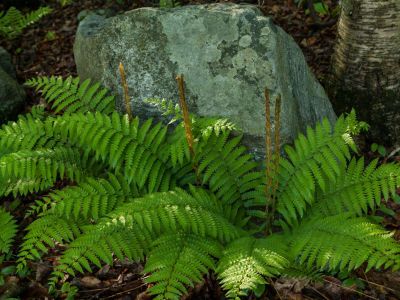About Shade Plants for Wet Sites
You may think finding wet-tolerant shade plants is a challenge. Often, when looking up shade plants, you will get a list of shade plants for dry areas, not shade plants for poor drainage or wet sites. But there are many, and shade plants for wet sites aren’t limiting either. There are interesting, moisture-loving plants for the shade that bloom or have unique foliage shapes and colors. A wet site might be an area with poor drainage or a natural or manmade water feature in a shaded area. In either case, the best place to start is by investigating natural areas in your USDA zone that mimic these conditions. Indigenous plants are more likely to thrive. Look for areas such as swamps, riverbanks, lakesides, or other naturally damp areas.
Shade Plants for Poor Drainage
Finding shade plants for areas of poor drainage can be difficult. These areas lack oxygenated soil. Combine this fact with shade and most plants will rot and die. Just because finding shade plants for poor drainage areas might be difficult doesn’t mean there aren’t any. For instance, many grasses make suitable wet-tolerant shade plants. Bowles’ golden sedge (Carex elata ‘Aurea’) and gold fountain sedge (Carex dolichostachya ‘Kaga Nishiki’) are two examples of moisture-loving grass plants for shade and poor drainage. Groundcovers are another consideration for shade plants that like it wet, plus they are low maintenance. Blushing Bride spiderwort and Concord Grape spiderwort are two such shade plants for wet sites. Perennials provide summer color and height but die back in many areas in the winter. Bridal Veil astilbe, with its shock of white blooms, looks terrific on a backdrop of darker green leaves, and astilbe is also available in other shades, from fire engine red to blushing pink. Rodgersia will add some height coming in at 3-5 feet (1-1.5 m.) with tall, pink flower spikes.
Other Wet Tolerant Shade Plants
Most ferns are also suited to wet sites, although many of them need well-draining soil. They bring that lush look to a site along with their varying heights and hues.
Cinnamon fern produces 4-foot (1 m.) long, blue/green fronds interspersed with cinnamon fronds.
Wood ferns grow up to 3.5 feet (1 m.) in height with a classic, vase shape and semi-evergreen fronds.
Tokyo ferns grow 18-36 inches (45.5-91.5 cm.) tall and work well as filler plants amongst taller perennials and shorter ground cover.
Of the shrubs, shade plants that like wet conditions include:
Arrowwood viburnum
Shrubby dogwood
Virginia sweetspire
Elderberries
Chokeberry
Carolina allspice
Canadian yew
Swamp azalea
Mountain pieris
Witch hazel
Bottlebrush buckeye
Groundcover wet tolerant shade plants include:
Bunchberry
Checkerberry
Japanese spurge
Yellowroot
Woodbine vine
Perennial shade plants for wet sites include:
Bee balm
Cardinal flower
False spirea
Marsh marigold
Turtlehead
Black snakeroot
Yellow wax-bells
Canada lily
Blue lobelia
Solomon’s seal
There are even trees that tolerate somewhat damp, shady sites such as:
Balsam fir
Red maple
False cypress
Arborvitae
White cedar
Basswood
Canada hemlock
To fill in any empty spaces, tuck in some shade and damp-loving annuals such as amethyst flower, forget-me-not, or nemesia.
